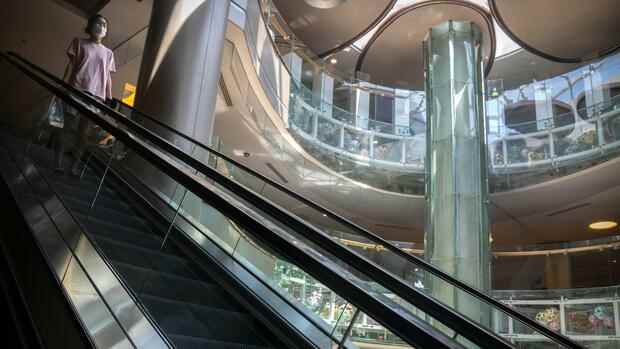Beijing China’s economy stabilized in May. But China’s consumers do not trust the recovery so far.
While industrial production grew by 0.7 percent in May compared to the same month last year, retail sales fell by 6.7 percent in the same period. They had already fallen by more than eleven percent in April. This is shown by current economic data published by China’s national statistics office on Wednesday.
The service sector is also feeling the effects of consumer restraint: sales in the catering industry fell by more than 21 percent. The slump in the real estate market is even more severe: Home sales fell by 41.7 percent.
The signals on the labor market are also mixed: while the recorded unemployment rate fell to 5.9 percent, the unemployment rate among 16 to 24-year-olds rose to a record 18.4 percent. Everyone is “very worried” about the unemployment data, said Fu Linghui, spokesman for the statistics bureau. In particular, the high level of youth unemployment is increasingly worrying the state leadership: in early summer, almost eleven million university graduates will be entering the labor market, “which could further increase the pressure to find employment,” said the spokesman.
Top jobs of the day
Find the best jobs now and
be notified by email.
Despite the mixed numbers, experts are cautiously optimistic. The worst of the lockdowns are “probably behind us,” commented Tommy Wu, chief China economist at Oxford Economics. Robin Xing, Morgan Stanley’s chief China economist, also believes China’s economy “has bottomed out,” he told Bloomberg television. It’s still a “very incomplete and bumpy recovery,” but the worst is over, the expert said.
The economic data also provided an upswing on the Chinese stock exchanges. The CSI300 index, which tracks the most important stocks in Shanghai and Shenzhen, rose to its highest level in three months.
The reason for the economic recovery is that lockdowns in most parts of China, with the exception of Shanghai and Beijing, were eased in May, explains economist Wu. The increase in industrial production can also be attributed to a recovery in the automotive industry. Important automotive locations in north-east China and in Shanghai were able to ramp up production again after weeks of closures. The number of vehicles produced increased from 1.28 million vehicles in April to 1.99 million in May.
New outbreaks in Shanghai and Beijing
In the financial and economic metropolis of Shanghai, the almost two-month strict lockdown was lifted at the beginning of June. Many of the 25 million inhabitants were not allowed to leave their homes during this time. The supply of food broke down at times, so that some complained about shortages. The Shanghai mega-lockdown has disrupted supply chains across China and the world.
However, it is questionable whether the recovery is sustainable. Because the high risk of infection of the omicron variant and China’s adherence to the zero-Covid policy mean that strict measures can come into force again at any time. In China, for example, entire buildings or neighborhoods are cordoned off even in the case of individual corona cases.
More Handelsblatt articles on China’s Covid policy:
However, both Shanghai and Beijing are grappling with new outbreaks. In Shanghai, for example, 15 million residents were asked to take tests last weekend after a corona case in a hairdressing salon. Concerns about another lockdown triggered panic buying in the affected areas on Friday. In Beijing, more than 10,000 contacts were identified after a case in a popular bar, and several residential complexes were cordoned off. Concerns about new restrictions also grew in the capital.
The uncertainty among the population and companies is therefore still great. Many consumers are keeping their money together, many companies have put their investments on hold.
Doubts about the effectiveness of the economic stimulus measures
Policy stimulus will play a crucial role in boosting domestic demand in the second half of the year, economist Wu says. However, he does not believe in a strong recovery. Since the state leadership is unswervingly adhering to the strict zero-Covid policy and there is always a threat of lockdowns, it is “unlikely that consumer sentiment will improve,” said the expert. Whether the political incentives will have an effect will only become apparent in the second half of the year.
In May, the State Council, led by China’s Premier Li Keqiang, passed a package of 33 stimulus measures to support the economy. They include, among other things, investments in infrastructure, easier lending, tax cuts and incentives to buy cars and household appliances, for example.
Many experts doubt that the measures will be enough to boost the economy, let alone achieve the growth target of 5.5 percent in the current year. The International Monetary Fund expects growth of 4.4 percent. The investment banks Bank of America, Barclays and UBS expect 4.2 percent, Nomura only 3.9 percent. Some Chinese experts even warn that it will be difficult to match the growth rate of 2020, up 2.3 percent.
More: Many Chinese want to leave their homeland
